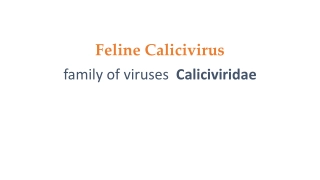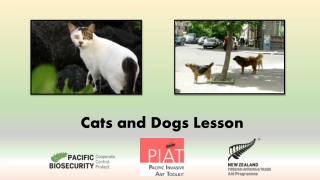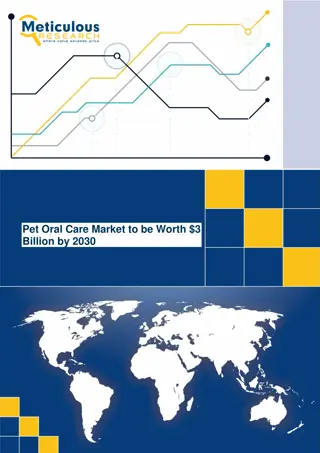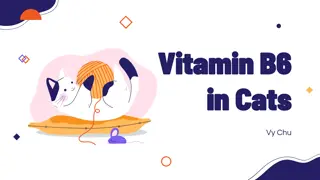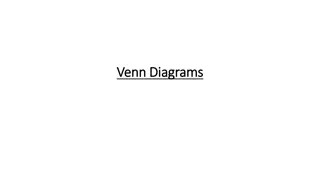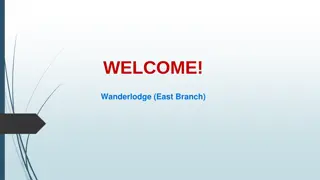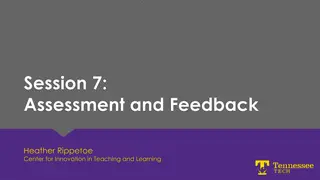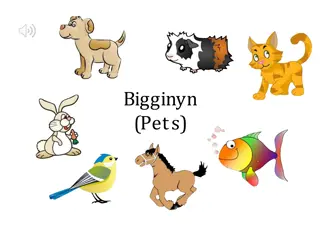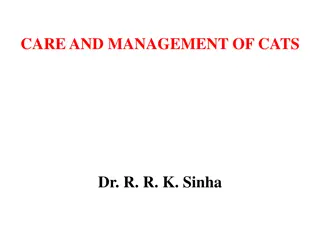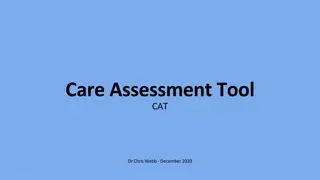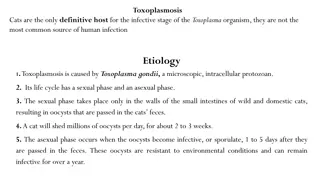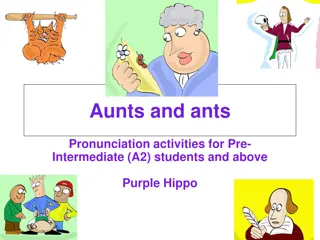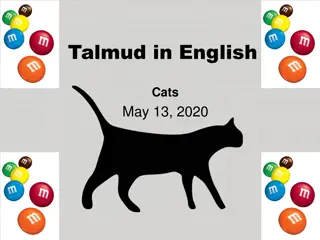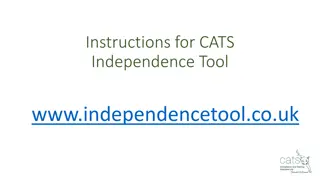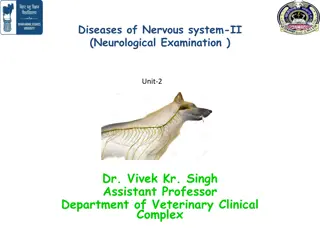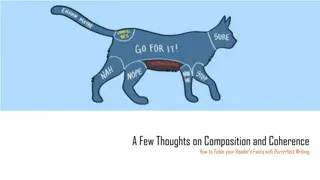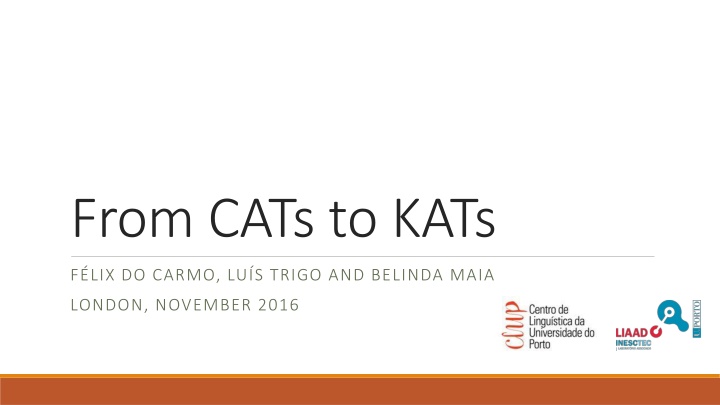
Evolution of Translation Tools: From CATs to KATs and Beyond
Discover the evolution of translation tools from Computer-Assisted Translation (CATs) to Knowledge-Assisted Translation (KATs). Dive into the realities faced by translators, processes, procedures, and the advanced methods used in translating with CATs. Explore how CATs are utilized in revising and post-editing, making translation tasks more efficient and accurate.
Download Presentation

Please find below an Image/Link to download the presentation.
The content on the website is provided AS IS for your information and personal use only. It may not be sold, licensed, or shared on other websites without obtaining consent from the author. If you encounter any issues during the download, it is possible that the publisher has removed the file from their server.
You are allowed to download the files provided on this website for personal or commercial use, subject to the condition that they are used lawfully. All files are the property of their respective owners.
The content on the website is provided AS IS for your information and personal use only. It may not be sold, licensed, or shared on other websites without obtaining consent from the author.
E N D
Presentation Transcript
From CATs to KATs F LIX DO CARMO, LU S TRIGO AND BELINDA MAIA LONDON, NOVEMBER 2016
CAT Computer-Assisted Translation KAT Knowledge-Assisted Translation
The evolution from CATs to KATs Translators reality Translation, Revision, Post-editing, Project management Constant need for better tools Specifications for new tools Based on processes and procedures References Translation Studies research Translation processes Translation tools Computer Sciences research Machine Translation (MT) -> Statistical Machine Translation (SMT) Natural Language Processing, Machine Learning, Artificial Intelligence, Augmented Intelligence 3
Processes and procedures Three processes Translation Revision Post-editing Translation process Cognitive approaches Decision outside the scope of this paper Four translation procedures/stages Management Research Writing/editing Revising/checking 5
Translating with CATs Translating new segments Support of terminology and concordancers (word-level) Overwriting source text Editing fuzzy matches Support by highlighting differences Edit differences on translation suggestion Re-edit when these are repeated in the text Checking repeated content Support from the TM (segment-level) Validate or edit 6
Revising with CATs Read the whole translation Source and target text Check references Repeat the translation process Validate decisions Decide differently Support for revision The same as for translation Terminology, condordances QA checks Maintain reference material 7
Post-editing with CATs Translating new segments MT translation hypothesis replaces the source text Support of terminology and concordancers (word-level) Editing by overwriting the translation hypothesis Editing fuzzy matches Support by highlighting differences Edit differences on translation suggestion Re-edit when these are repeated in the text Checking repeated content Support from the TM (segment-level) Validate or edit There is no specific support for Post-editing or Editing: Post-edited segments have the same CAT word-level support as in the translation process Fuzzy matches, which have most of the editing effort, still only have the CAT tool difference highlight support 8
Advanced support in CATs QA, spelling and grammar checks Non-linguistic details Based on word processors Predictive writing Auto text suggestions, based on terminology or bilingual databases Web search simplified Embedded web favourite lists Fuzzy match composition Create translation suggestions from fragments Project management Package together texts, TMs and Termbases Control productivity, quality, etc. Beyond CATs: Web and MT tools Interactive Machine Translation 9
Recommended specifications for new tools
4 procedures/stages 1) Management Connect texts to resources 2) Research Learn from searches 3) Writing/editing Translation - overwriting Editing - 4 editing actions 4) Revising/checking Focus on specific tasks 11
1) Management Leverage the linguistic knowledge existing in texts, TMs and other resources Use Technical domain as the central feature to allocate the right contents to the right projects and to the right people Tasks and stages: For each new project, use classification techniques to identify the technical domain Use clustering techniques to associate the appropriate bilingual data (TMs, MT engines, references) to the project based on technical domain Associate people to domains based on the analysis of texts they produced Classify people according to specialisations, based on networks of texts Assign people to projects based on specialisations Management system by visual representations of proximity scales, or connections based on similarity 12
MDS representation Figure 1: MDS representation of colour- coded clusters of documents/resources 13
Graph-based approach Figure 2: Network of people in a R&D unit/center 14
2) Translators research TMs and references (unaligned corpora) clustered by domain Specialised search engines Vertical web search engines Log and cluster web sites used as references Crawl the web for similar references Terminology and keyword extraction Extract word and multi-word units Create ontologies Visualise clusters of words Named Entity Recognition Identify names of people, institutions and places, dates and other non-translatable elements Mark them for exclusion from the MT system 15
Research knowledge base Build a local knowledge-base with these details Web references Named Entities Terminology and ontologies Ownership issues Owned by the translator empower and support translator s specialisation Shared with the reviser or production team useful to validate confidence in translator The more specialised the references, the more confidence in the translator 16
3) Writing/editing Translation Overwriting Predictive writing (typeahead) Post-editing based on four editing micro-tasks or actions Deleting Inserting Moving Replacing Support specifically these four actions Machine Learning used in Quality Estimation Present suggestions for the editing actions 17
Interactive DELETION SOURCE MT SUGGESTION POST-EDITED Acquire - to obtain possession of something Adquirir - para obter a posse de algo Adquirir - obter a posse de algo Align - to place something in an orderly position in relation to something else Alinhar - para colocar algo em uma posi o ordenada em rela o a outra coisa Alocar - para dividir algo entre diferentes pessoas ou projetos Alinhar - colocar algo em uma posi o ordenada em rela o a outra coisa Alocar - dividir algo entre diferentes pessoas ou projetos Allocate - to divide something between different people or projects Learn deletion and suggest the same action in similar contexts 18
Interactive INSERTION SOURCE MT SUGGESTION POST-EDITED User Name/ID Nome de utilizador Nome/ID de utilizador Patient Name/ID Nome do paciente Nome/ID do paciente Item Name/ID Nome do item Nome/ID do item Learn insertion and suggest the same action in similar contexts 19
Interactive MOVEMENT SOURCE MT SUGGESTION POST-EDITED VEC 1 controller pin 7 (BK) wire Controlador VEC 1 fio do pino 7 (BK) Fio do pino 7 (BK) do Controlador VEC 1 VEC 1 controller + (RD) wire 1 Controlador VEC + (RD) Fio + (RD) do Controlador VEC 1 VEC 1 controller (BL) wire VEC 1 controlador - (BL) Fio - (BL) do Controlador VEC 1 Learn movement and suggest the same action in similar contexts Multi-word units validated when translators move them Added to translation model with a higher (101%) confidence score 20
Interactive REPLACEMENT SOURCE MT SUGGESTION POST-EDITED Users must be set up and maintained at the console. Os utilizadores t m de estar configurado e mantido na consola. Os utilizadores t m de estar configurados e mantidos na consola. Assess - to examine something in order to judge or evaluate it Avaliar - examinar algo para juiz ou avaliar Avaliar - examinar algo para ajuizar ou avaliar Act - to do something to change a situation Ato - fazer algo para mudar uma situa o Atuar - fazer algo para mudar uma situa o Learn replacement and suggest the same action in similar contexts Multi-word units validated when translators replace them Added to translation model as high-score alternatives to units replaced 21
4) Revising and checking Study the specificities of this stage Eliminate the need for the reviser to repeat translator s research, decisions and edit efforts Setup QA checks Manage reference material 22
Support to revision/checking Validate the references used by the translators -> quicker confidence assessment Highlight edits made to fuzzy matches -> quicker edit validation Present suggestions to the 4 editing actions -> quicker editing Build sub-segment glossaries -> quicker consistency checking Improve QAs Build QAs according to client instructions and Style Guides QAs that learn from false positives E.g. Intentional diverging translations due to different contexts Clean and maintain TMs Excluding misaligned translations (due to segmentation issues) Excluding low-repeatable translations (very context-dependent) 23
New and intelligent tools Build better Interactive Translation tools Instead of trying to emulate human actions, apply the best technologies to support translation, revision and editing Understand processes and procedures Support specific actions performed by translators Manage knowledge Take advantage of all the knowledge that may be extracted from data collected in operations and actions performed by translators KATs = Knowledge-Assisted Translation tools 25

